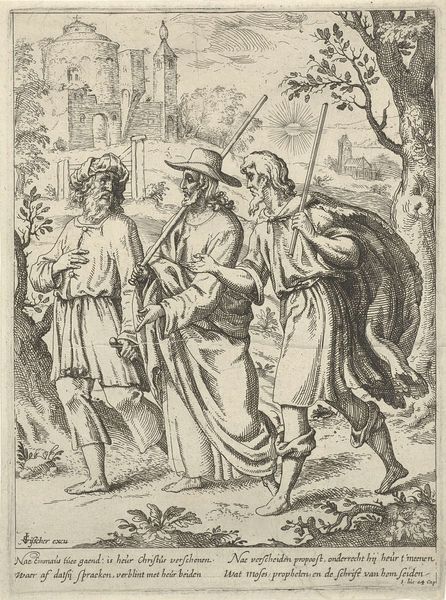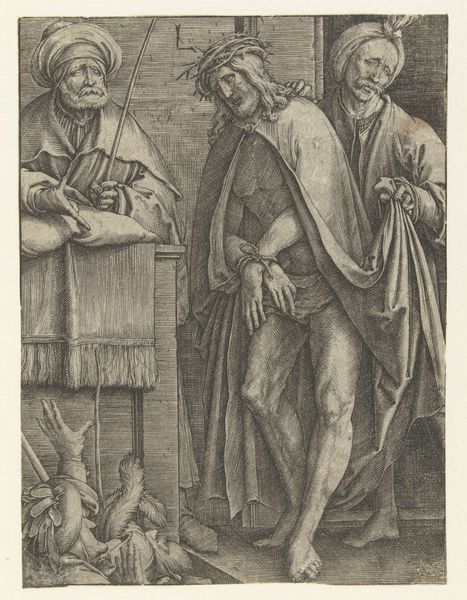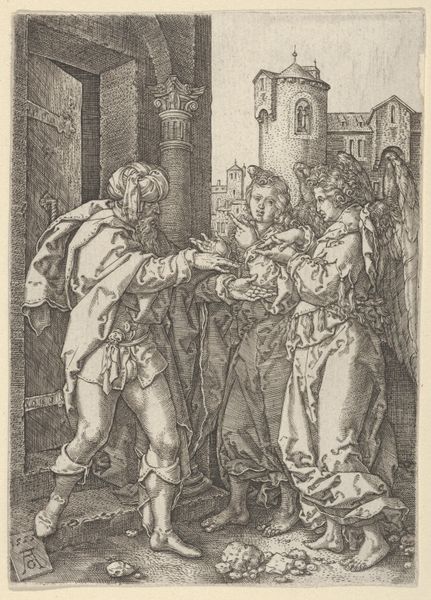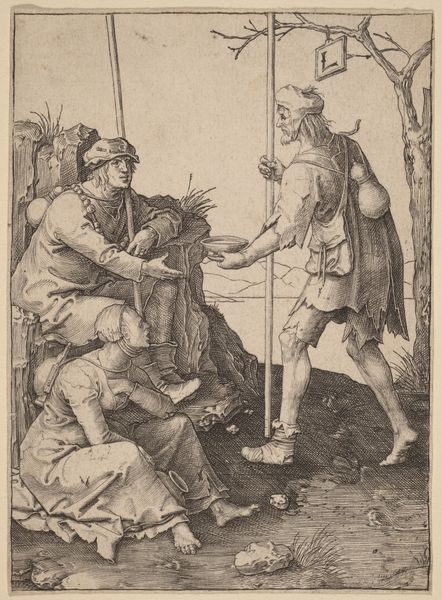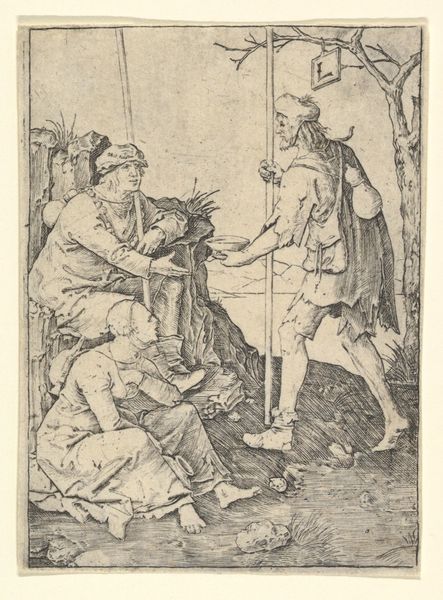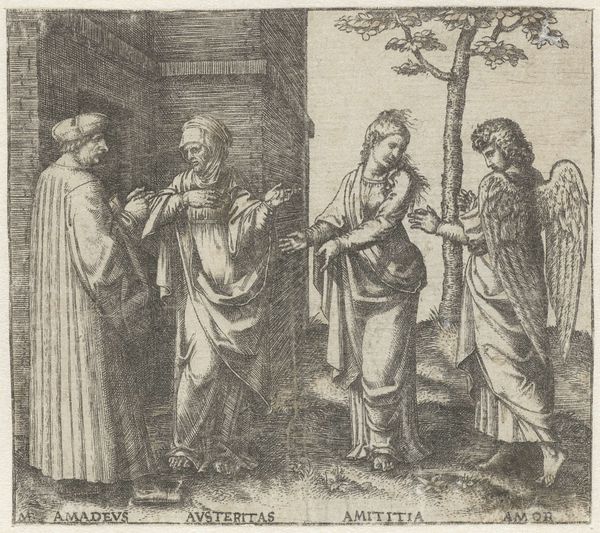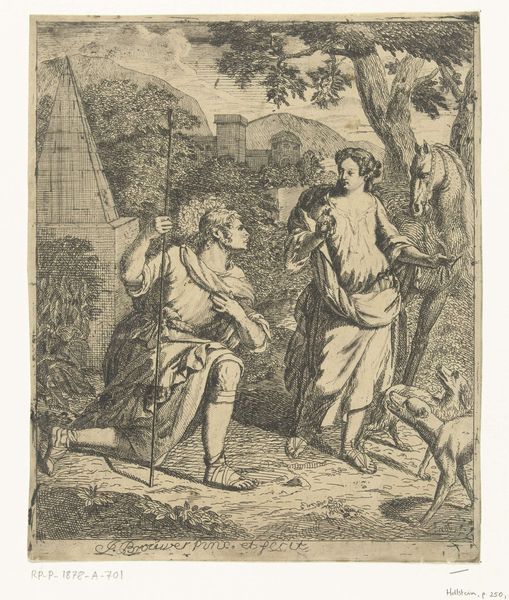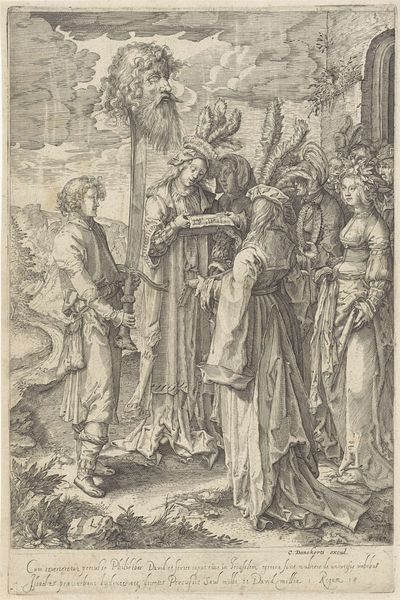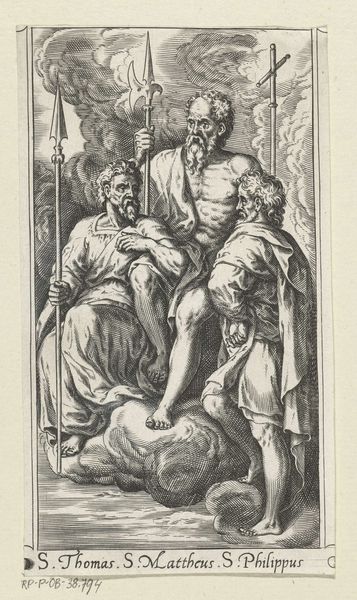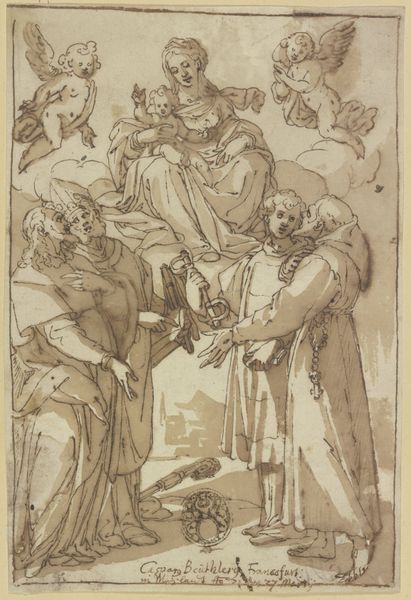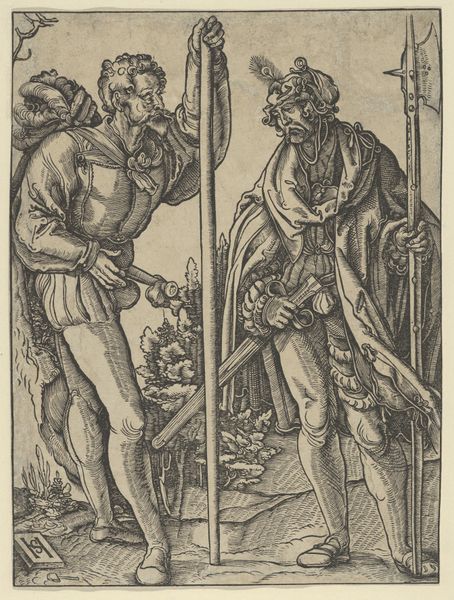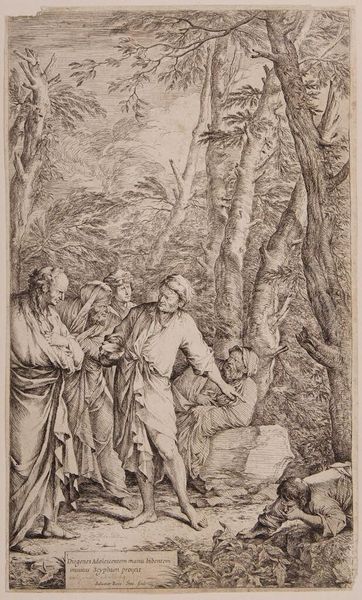
print, engraving
#
narrative-art
# print
#
figuration
#
history-painting
#
italian-renaissance
#
engraving
Dimensions: height 79 mm, width 78 mm
Copyright: Rijks Museum: Open Domain
Curator: Here we have Marcantonio Raimondi's engraving, "Moeder met kind pratend met twee mannen," or "Mother with child speaking with two men," dating from around 1510 to 1527. Editor: The crispness of the engraving lends a sense of austere dignity to the figures. Despite the humble setting, there is an almost classical bearing to their poses and clothing. Curator: Indeed. Raimondi was instrumental in disseminating the style of Raphael to a wider audience. His workshop’s reliance on collaborative labor meant he acted as both master craftsman and proto-publisher, making this work part of a larger visual economy. Editor: I'm intrigued by the narrative implied here. What are these men discussing with the mother and child? And consider the context in which it would have been displayed and distributed. Surely its impact was shaped by Renaissance societal expectations of motherhood and virtue. Curator: Prints like these were integral to how artistic ideas and compositions traveled and were transformed. The accessibility of engravings allowed for wider consumption than, say, a fresco or an oil painting, fundamentally reshaping the networks of artistic exchange and material knowledge in early modern Europe. It shifts art consumption from being an exclusive domain for wealthy patrons, to one within reach of artisans or even merchants, and radically expanded notions of who an "art" consumer might be. Editor: I think the image’s impact rests on its understated quality. The engraving possesses an engaging naturalism, as the interplay between figures and the architecture behind it invite us into their narrative, reminding us that the stories represented in the artwork carry particular cultural meaning and consequences, historically framed as morality tales in society at that time. Curator: Examining Raimondi’s broader production practices helps us better comprehend how his workshop's processes affected his overall style and shaped art’s very production, in this era. Editor: Absolutely. It’s clear that "Moeder met kind pratend met twee mannen," while simple, captures a complex confluence of artistic, social, and production elements characteristic of the Italian Renaissance. Curator: A tangible connection to art's early manufacturing.
Comments
No comments
Be the first to comment and join the conversation on the ultimate creative platform.

